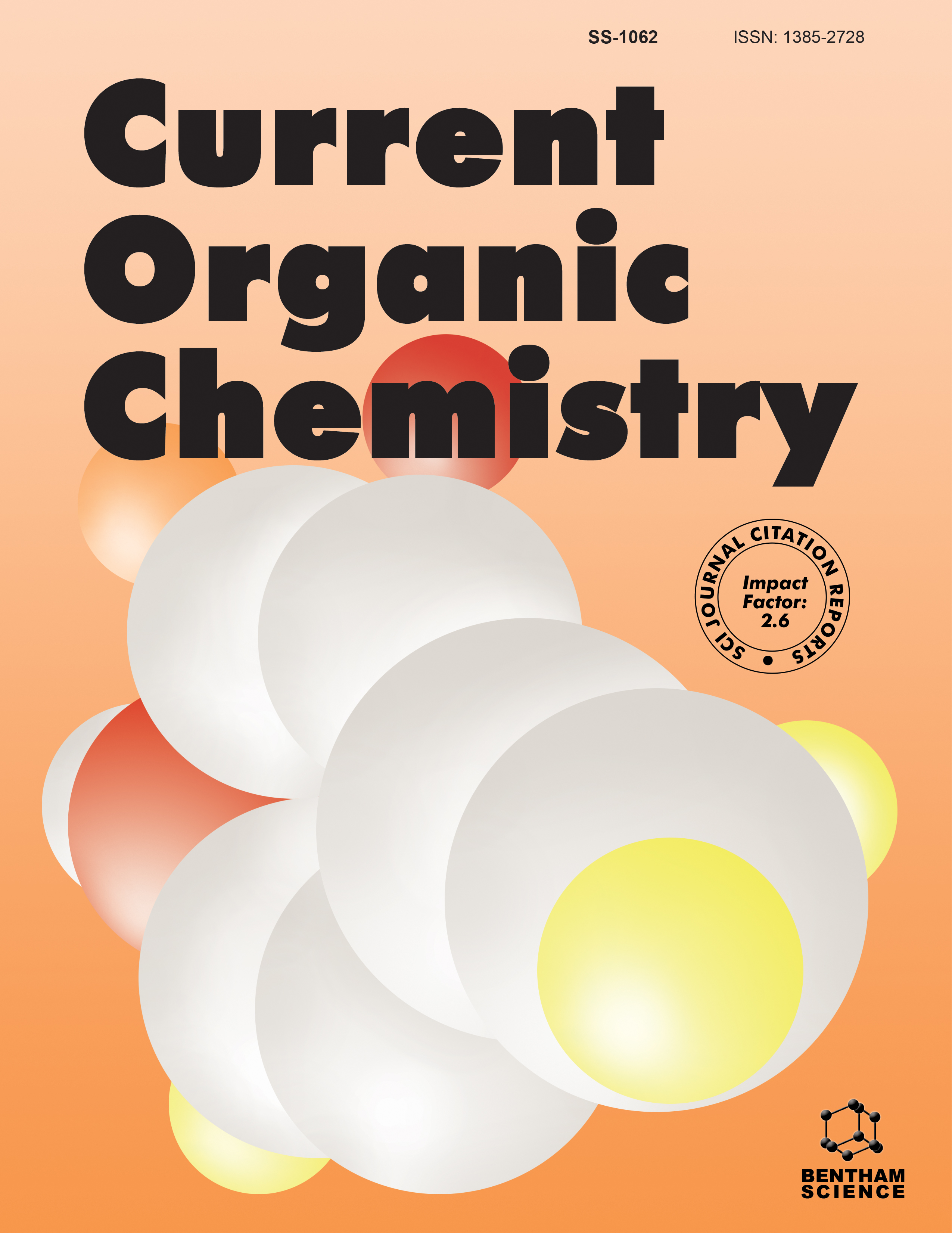- Home
- A-Z Publications
- Current Organic Chemistry
- Previous Issues
- Volume 21, Issue 1, 2017
Current Organic Chemistry - Volume 21, Issue 1, 2017
Volume 21, Issue 1, 2017
-
-
Target Delivery from Modified Polymers to Cancer Treatment
More LessSeveral kinds of polymeric particles designed for drug delivery purposes can be successfully synthesized via heterogeneous polymerization processes. Due to the high ability to produce tailor-made polymers, suspension, mass-suspension, suspension-emulsion, miniemulsion and emulsion polymerization processes deserve special attention in the drug delivery field, as the process operating conditions play a significant role o Read More
-
-
-
Advanced Systems for Controlled Drug Delivery from Chemically Modified Elastin-like Recombinamers
More LessTargeted drug delivery is a new multidisciplinary field that aims to develop innovative nanomaterials, tools and devices to deploy a therapeutic agent to specific parts of the body where there is solely diseased tissue, thereby avoiding interaction with healthy tissue. Advanced drug-delivery systems attempt to control the site of action and release rate and act by means of either a physiological or a chemical trigger. In this se Read More
-
-
-
Drug Delivery Strategies Based on Nanotechnology for Cancer Immunotherapy
More LessAuthors: Lisha Liu and Chen JiangCancer is a serious hazard to human health all around the world; however, many current therapies remain toxic and poor. In view of the understanding of immunology and tumor biology, cancer immunotherapy with minimal toxicity has been regarded as a promising strategy for cancer treatment because of immune surveillance. Unfortunately, the efficacy of immunotherapy was impeded and resisted due to the Read More
-
-
-
Nanostructured Approaches for the Targeted Delivery of Antibiotics in Difficult Infections
More LessDespite the increasing number of natural and synthetic antimicrobial agents, the prevalence of severe infections, produced by antibiotic resistant pathogens or involving biofilm embedded bacteria continues to emerge. Although antibiotics are still the only choice for treating infections, either in unique or in combined therapeutic schemes, a series of limitations related to the physico-chemical properties of the drug, the host resp Read More
-
-
-
Bioactive Wound Dressings for the Management of Chronic Wounds
More LessThis article offers a review regarding current approaches in bioactive dressings design, the bioactive components as well as the experimental models used to assess their efficiency. Wound dressings come in a variety of materials including natural polymers and synthetic polymers manufactured into various forms, such as foams, films, hydrocolloids, hydrogels, sponges, membranes, skin substitutes, electrospun mic Read More
-
-
-
Drug Delivery Systems for Dental Applications
More LessInevitable caries formation and other tooth related diseases are one of the most common factors affecting human quality of life, as they are often followed by loss of teeth. Significant research efforts have been devoted to establishing control and preventive solutions. It is clearly known that fluoride is one of the promising chemical substances with anti-carious activity. The elimination of the microbial infection, especially the Read More
-
-
-
Delivering the "Blueprints" or "DNA Repairing Kits" Instead of Drugs in the Treatment of Congenital Hemoglobinopathies
More LessAuthors: Diana Chiru, Cristina Mambet, Lilia Matei, Coralia Bleotu, Simona Ruta and Carmen C. DiaconuHemoglobinopathies, such as β-thalassemia and sickle cell disease (SCD), are among the most common congenital diseases in the world, with high mortality and morbidity rates. The most straightforward approach to correct the main culprit in hemoglobinopathies - the imbalance between the amounts of alpha-like globins/betalike globins- will need to target directly the gene structure or their regulatory elements in order to obt Read More
-
-
-
Preparation of Acridine Derivatives Bearing Saturated Rings
More LessThis review presents possible routs of preparation of acridine derivatives con-taining saturated rings that can be obtained both as a result of traditional organic synthesis based on cyclization and condensation reactions and whenever available by partial or total catalytic (heterogeneous or homogeneous) hydrogenation of appropriate acridine derivatives. Methods of preparations of acridine derivatives bearing saturated rin Read More
-
Volumes & issues
-
Volume 29 (2025)
-
Volume 28 (2024)
-
Volume 27 (2023)
-
Volume 26 (2022)
-
Volume 25 (2021)
-
Volume 24 (2020)
-
Volume 23 (2019)
-
Volume 22 (2018)
-
Volume 21 (2017)
-
Volume 20 (2016)
-
Volume 19 (2015)
-
Volume 18 (2014)
-
Volume 17 (2013)
-
Volume 16 (2012)
-
Volume 15 (2011)
-
Volume 14 (2010)
-
Volume 13 (2009)
-
Volume 12 (2008)
-
Volume 11 (2007)
-
Volume 10 (2006)
-
Volume 9 (2005)
-
Volume 8 (2004)
-
Volume 7 (2003)
-
Volume 6 (2002)
-
Volume 5 (2001)
-
Volume 4 (2000)
Most Read This Month
Article
content/journals/coc
Journal
10
5
false
en


